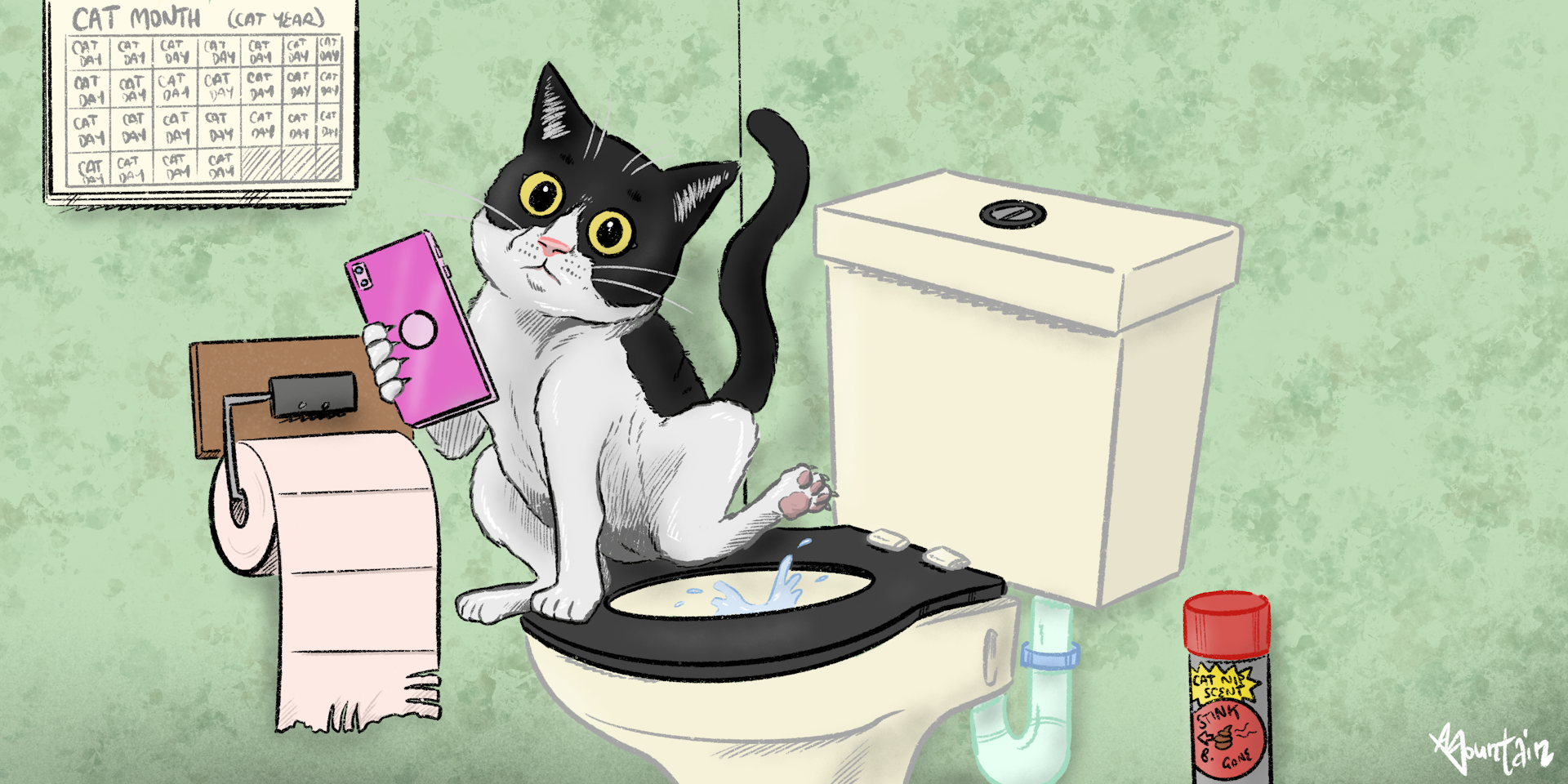Prevent Plumbing Problems: Never Flush Cat Poop Down Your Toilet - Professional Guidance
Prevent Plumbing Problems: Never Flush Cat Poop Down Your Toilet - Professional Guidance
Blog Article
Are you trying to find guidance about How to Dispose of Cat Poop and Litter Without Plastic Bags?

Introduction
As cat owners, it's important to be mindful of just how we get rid of our feline friends' waste. While it might seem practical to purge feline poop down the commode, this method can have harmful effects for both the environment and human wellness.
Environmental Impact
Flushing pet cat poop introduces dangerous pathogens and bloodsuckers right into the supply of water, positioning a significant danger to marine communities. These pollutants can adversely impact aquatic life and concession water quality.
Health and wellness Risks
Along with environmental problems, flushing feline waste can likewise posture wellness risks to human beings. Cat feces might contain Toxoplasma gondii, a bloodsucker that can cause toxoplasmosis-- a possibly extreme disease, particularly for pregnant ladies and people with damaged body immune systems.
Alternatives to Flushing
Fortunately, there are much safer and extra responsible ways to get rid of feline poop. Take into consideration the adhering to alternatives:
1. Scoop and Dispose in Trash
The most common technique of throwing away cat poop is to scoop it into a naturally degradable bag and toss it in the garbage. Make sure to make use of a committed clutter inside story and dispose of the waste promptly.
2. Use Biodegradable Litter
Opt for naturally degradable feline trash made from materials such as corn or wheat. These trashes are environmentally friendly and can be safely thrown away in the garbage.
3. Bury in the Yard
If you have a lawn, take into consideration burying pet cat waste in a designated area away from vegetable gardens and water resources. Make sure to dig deep enough to stop contamination of groundwater.
4. Mount a Pet Waste Disposal System
Invest in a pet dog garbage disposal system specifically made for cat waste. These systems make use of enzymes to break down the waste, minimizing smell and ecological effect.
Conclusion
Responsible family pet possession extends beyond providing food and shelter-- it additionally entails correct waste monitoring. By avoiding purging feline poop down the commode and choosing different disposal approaches, we can lessen our environmental impact and secure human health and wellness.
Why Can’t I Flush Cat Poop?
It Spreads a Parasite
Cats are frequently infected with a parasite called toxoplasma gondii. The parasite causes an infection called toxoplasmosis. It is usually harmless to cats. The parasite only uses cat poop as a host for its eggs. Otherwise, the cat’s immune system usually keeps the infection at low enough levels to maintain its own health. But it does not stop the develop of eggs. These eggs are tiny and surprisingly tough. They may survive for a year before they begin to grow. But that’s the problem.
Our wastewater system is not designed to deal with toxoplasmosis eggs. Instead, most eggs will flush from your toilet into sewers and wastewater management plants. After the sewage is treated for many other harmful things in it, it is typically released into local rivers, lakes, or oceans. Here, the toxoplasmosis eggs can find new hosts, including starfish, crabs, otters, and many other wildlife. For many, this is a significant risk to their health. Toxoplasmosis can also end up infecting water sources that are important for agriculture, which means our deer, pigs, and sheep can get infected too.
Is There Risk to Humans?
There can be a risk to human life from flushing cat poop down the toilet. If you do so, the parasites from your cat’s poop can end up in shellfish, game animals, or livestock. If this meat is then served raw or undercooked, the people who eat it can get sick.
In fact, according to the CDC, 40 million people in the United States are infected with toxoplasma gondii. They get it from exposure to infected seafood, or from some kind of cat poop contamination, like drinking from a stream that is contaminated or touching anything that has come into contact with cat poop. That includes just cleaning a cat litter box.
Most people who get infected with these parasites will not develop any symptoms. However, for pregnant women or for those with compromised immune systems, the parasite can cause severe health problems.
How to Handle Cat Poop
The best way to handle cat poop is actually to clean the box more often. The eggs that the parasite sheds will not become active until one to five days after the cat poops. That means that if you clean daily, you’re much less likely to come into direct contact with infectious eggs.
That said, always dispose of cat poop in the garbage and not down the toilet. Wash your hands before and after you clean the litter box, and bring the bag of poop right outside to your garbage bins.
https://trenchlesssolutionsusa.com/why-cant-i-flush-cat-poop/
We had been introduced to that editorial on Can You Flush Cat Poo or Litter Down the Toilet? through an acquaintance on our other blog. Be sure to take the time to distribute this content if you enjoyed reading it. I praise you for your time. Come back soon.
Book Instantly Report this page